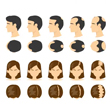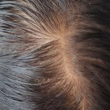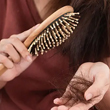Low-level Laser Therapy for Hair Fall Treatment
Hair loss is a real problem for men and women of all ages. While there are medicated shampoos and serums on the market, many hair products can be expensive, and some can have several side effects. This is where low-level laser therapy (LLLT) has been introduced as an alternative treatment for hair growth.
Laser hair therapy is a new technique that has been scientifically proven to prevent hair loss. Read this guide for everything you need to know about hair fall treatment using Low-level Laser Therapy.
What is Low-Level Laser Therapy? 1,2
Low-level laser therapy (LLLT) is a therapeutic method that uses laser radiation in the visible red to the near-infrared spectral range. The laser is absorbed into the cell without producing thermal effects.
LLLT stimulates cellular processes leading to increased tissue regeneration and repair, stimulation of the immune system, and release of anti-inflammatory cytokines.

A low-level Laser can increase blood flow to your scalp, which increases the health of your hair follicles and promotes healthy hair growth.
Hair loss can be caused by genetics, aging, stress, poor diet, and many other factors. But regardless of the cause, when you lose hair, it can be challenging to accept and live with.
Low-level laser therapy offers hope for people who want to reduce hair loss or even regrow hair. The treatment is precise and can be controlled by adjusting wavelength, power density, pulse duration, and repetition rate.
Low-Level Laser Therapy for Hair loss 3
Low-level Laser Therapy and medicine both help in the treatment of hair. It is a practical, affordable, holistic approach to reversing hair loss due to various causes.
The process involves shining a beam of light at the scalp. This light penetrates the skin and then the tissues beneath the skin. There it stimulates specific cells that are involved in hair growth.

These cells then produce chemicals like prostaglandin and nitrous oxide, which stimulate other cells to make new hair follicles and spur new hair strands. The treatment also helps control dandruff, treat alopecia (hair loss due to health problems), and helps to grow back thinning hair. LLLT stimulates cells in the body to produce more energy and oxygen, making healthy cells younger and more robust. It has been reported to promote blood circulation in the scalp, which will also improve hair growth. While treating hair loss, it also helps with growing back hair on other parts of the body like arms and legs.
Low-level laser therapy is also known as cold laser therapy, holistic laser therapy, non-thermal laser therapy, and photobiomodulation. The use of lasers for hair loss treatment is a relatively new application of this technology. Clinical studies have shown that low-level laser therapy may improve hair growth in people with hair loss; it may also help with wound healing after hair transplant surgery.
How is Low-level Laser Therapy Performed for Hair Loss? 4
Low-level laser therapy — also referred to as red light therapy and cold laser therapy — irradiates photons into scalp tissues. Weak cells absorb these photons to improve hair growth. This treatment involves the use of light-emitting diodes (LED). LEDs are semiconductor devices that emit visible light when current flows through them. The therapy consists in using LED devices that emit infrared rays in specific wavelengths beneficial for hair growth. The rays penetrate the scalp and help stimulate cell metabolism, improve blood flow and increase oxygen supply to the hair follicles.
Low-level laser therapy is an exciting combination of two techniques, both of which use light to affect gene expression; one method involves using visible light (such as red light), while the other technique consists in using near-infrared light (such as near-infrared light).
Visible light uses ultraviolet radiation (UVA), while near-infrared uses infrared (IR). The result is that visible and near-infrared produce similar effects; they act on different wavelengths of light, but both act on DNA.
Some practitioners recommend combining the use of an oral medicine like Minoxidil with LLLT. The combination can be helpful in cases where LLLT alone isn't enough to stimulate hair growth. However, it's recommended to consult with a physician before taking minoxidil to understand the drug's dosage and frequency of consumption.
Benefits of Low-level Laser Therapy 5
Low-level laser therapy (LLLT) is a non-invasive treatment that can be used to stimulate hair follicles. This helps to promote hair growth and can also prevent further hair loss.
The procedure is widely accepted as safe, tolerable, and less invasive than hair transplant surgery. The process of LLLT is entirely painless, and no anaesthesia is required. It takes only 5 minutes per session once every week, making this procedure easier than transplants, often taking several hours.
List of Benefits of Low-level Laser Therapy:
- Reduce hair loss and promote hair growth
- Reduce inflammation and reduce itching
- Anti-bacterial and anti-inflammatory
- Smoother and shinier hair
- Safe and effective for all types of hair
- Vascular dilation, improve blood circulation
- Promote microcirculation of the scalp, accelerate metabolism
- Improves the overall condition of the scalp, relieving stress and promoting restful sleep.
The procedure works by stimulating the body's natural healing process, strengthening hair follicles, prolonging their growth phase, and resulting in thicker, stronger hair.
Conclusion
Low-level laser therapy or phototherapy is based on the principle that stimulating hair growth with laser can help regrow new hair. This approach has proven to be effective in treating male pattern baldness . Low-Level Laser Therapy is a practical addition to any hair treatment routine. Hair growth takes time, so start now!
Myth Busters HairFall

Androgenetic Alopecia - Everything You Need To Know
Have you been experiencing excessive hair fall over a prolonged period of time? It could be an early sign of androgenetic alopecia. It is a hair loss disorder common in both genders and can lead to progressive thinning and even baldness in some patients if not caught and treated early.

How To Make Hair Grow Faster For Men
A head full of healthy hair is a matter of confidence. Hair has its own mechanism of growing and shedding, and it is when this mechanism is thrown off that growth is hindered. Especially in the case of males, hair growth faces a lot of hiccups that can easily be managed.

Female Pattern Baldness - Causes & Treatments
Have you suddenly noticed an increase in the number of hair strands on your pillow in the morning? Or is your ponytail getting thinner by day? Well, you might be suffering from female pattern baldness. While that does sound scary, identifying it early on is key to treating this condition effectively. So keep reading to know what this is, how you can identify it, and most importantly, what treatments you can avail of to get your beautiful lustrous hair back.

What Are The Reasons For Hairfall?
Almost everyone experiences some amount of hair thinning over the years. Shedding around 50 to 100 single strands of hair per day is considered normal. However, losing more than 150 strands a day, experiencing sudden thinning, or developing circular bald patches on your scalp are reasons for concern. Hair loss occurs when new hair doesn’t grow fast enough to replace the amount of hair you lose daily. Hair can fall due to various reasons, with hereditary hair loss and poor nutrition being the most common hair fall reasons.

Expert Approved Tips For Hair Growth
What can be more debilitating than seeing hundreds of hair strands shedding from your scalp every time you brush your hair? Also, excessive molting occurs during seasonal changes that can be very stressful for you. Although it’s okay to lose between 50-100 strands every day, according to the American Academy of Dermatology, the problem occurs when you start shedding more than normal. But that doesn’t mean you have to feel helpless as there are ways to grow your hair back. Even if you are coping with baldness or alopecia, certain hair growth tips from dermatologists can come to your rescue. Read on to discover how these tips can be your savior when abnormal hair fall problems are in sight.
Trending Videos
+ 6 Sources
'LMRC - GGI-CO-A2-DMA-300001252-300001252-WM-L21-704'
© 2021 Dr. Reddy’s Laboratories Ltd. All rights reserved.